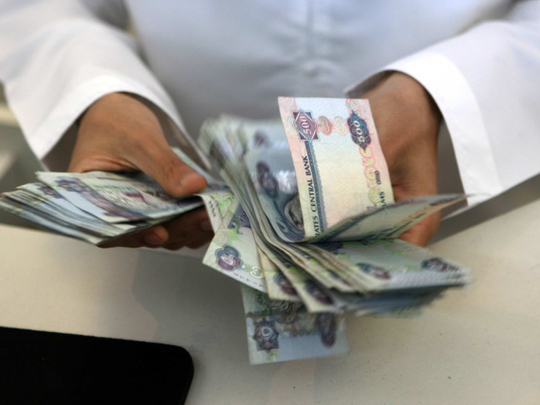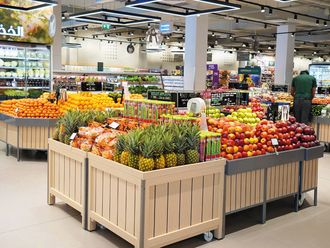
Dubai: After COVID-19 tightened income during most of 2020, UAE expatriates expectedly took on more loans – but how did this help bolster the economy and what did this mean for your personal finances?
Economists view the uptick in loans as a much-needed buoy for the economy and stability for residents’ finances. UAE banks availed expats loans worth Dh149 billion from January to November last year – a figure that rose by Dh19.7 billion amid the pandemic, recent UAE Central Bank data showed.
Steady growth in loans
UAE’s loan growth has been picking up pace and economists have been widely weighing that this is indicative of the country's healthy financial profile despite the global economic slowdown triggered by the COVID-19 pandemic.
Loan growth in the UAE averaged 5.24 per cent from 2009 until 2020, independent statistics show, reaching an all-time high of 10.2 per cent in November of 2014 and a record low of 1.70 per cent in December of 2017.
Bank loans to non-residents accounted for 8.3 per cent of the total loans provided by UAE banks in the 11-month period in 2020, which is estimated at a mammoth total of Dh1.795 trillion, according to the apex bank's latest figures.
Economists turn optimistic
“Dubai’s economy... has been boosted last month by an influx of tourists seeking a warm winter getaway,” wrote James Swanston, Middle East and North Africa Economist at UK-based Capital Economics’ Emerging Markets team.
A total of Dh126.5 billion was injected to the UAE economy and introduced since the COVID-19 outbreak to survive the current challenging conditions. Dubai, a business and financial hub, has approved a Dh57.1 billion budget for 2021.
While the global backdrop remains cautious, analysts at Bank of America Merrill Lynch (BoAML) currently have a “more optimistic” outlook for the UAE economy, with “stronger loan growth” also seen boosting the bottom line numbers of UAE banks. But how does rising loans and lenders’ earnings, profit the UAE economy?
Lenders also improve the process of allocating scarce capital in the economy by extending credit to where it is most productive, as well as allowing households to plan their consumption accordingly, over time by allowing residents or citizens to save and borrow more.
Banks also provide liquidity to the economy as at its core, it is in the business of funding illiquid (not easily convertible to cash) assets – i.e. loans – with highly liquid (easily convertible to cash) liabilities – i.e. deposits. By doing so, banks help savers manage their risk to turn cash liquid (hard cash), while at the same time enabling long-term investment.
Lenders also maintain precautionary savings to meet liquidity needs. There is evidence that banks' liquidity creation is associated with higher economic growth across countries and industries worldwide – as it has been the case for the UAE as well.
How interest rates assist economic growth
The world economy has for decades been reliant on central banks to pull itself out of a crisis, and now since the start of the current health crisis, an unprecedented level of economic cash injection (stimulus) was required to keep growth intact, and the central banks worldwide did just that.
As the progress around a vaccine advance, economists see central banks looking to keep interest rates low for now and inject stimulus only if necessary, up until their respective economies, businesses and resident’s finances reach pre-pandemic functionality – and lower rates improve appetite to borrow.
However, on a separate note, UAE-based bankers and businessmen continue to be of the opinion that sustained central bank stimulus will be a catalyst in the fast recovery of the economy.
More borrowing equals more spending
Consumer spending made up 40 per cent of the UAE’s GDP in 2019, so if residents aren’t spending or borrowing – or simply put, if there is no cash circulating the economic ecosystem – then that will have an impact on economic activity.
Moreover, when individuals decide not to spend or not borrow, but rather save money and not spend it because they think that they should have precautionary savings, delves into an economic theory – from renowned economist John Keynes in the 1930s – on how a lack of consumption hurts economies.
And as expected, with so much economic uncertainty surrounding the coronavirus outbreak, people held onto their money in March and April, and consumer spending dipped to a record lows worldwide, the household savings rate hitting its highest in decades, and growth took a hit as well.
UAE household spending tracks normalcy
Economists see household spending in the UAE returning to normal, with spending patterns already improving much in the past months. Consumer spending in the UAE is expected to grow by 4.1 per cent in 2021, compared to a 5.7 per cent contraction in 2020, according to a report by Fitch Solutions.
Spending on clothes and shoes will take the second position in total household expenditure, with a 4 per cent growth. The report referred that improving economic growth in 2021, recovering oil prices, a revival of international tourism, and stimulus measures will support disposable incomes in the UAE.
Hence, the average annual disposable income in the UAE is predicted to nominally grow by 12.4 per cent, versus a contraction of 19.6 per cent in 2020.
With spending in the UAE estimated to exceed Dh950 billion in 2021, analysts view that the economy is well on track to stage a recovery by this year and the sluggishness or any slow-down in recovery will remain dependent on how residents and business owners implement spending and saving strategies.
How does borrowing/spending help economic recovery?
When it comes having cash-at-hand through let’s say loans, studies have shown how in the two decades between 2000 and 2020 – while the rate of savings worldwide have more or less trended downwards with interest rates hitting all-time lows during this time period – the growth rate of borrowing improves.
While reining back spending, cutting back on expenses and holding onto cash is the go-to solution during such dire times and circumstances, it may not be helping when it comes to aiding hopes of a return to normalcy for all. So, what can a saver or a person looking to closely budget do in a situation like this?
Higher savings or opting to get loans from banks mean that consumers have cushions that can help absorb overwhelming expenses without digging the hole deeper.
But just as importantly, having a higher portion of income allocated to savings or to pay back loans mean that living expenses are evened out – and consumers can adjust their budgets.
Bottom line
That ability to cope with financial hardship – like taking loans in this instance – ultimately means that the economy recovers much faster. After all, when the day-to-day bills are being paid, and loans are taken, the banks, utilities, and grocery stores can keep their doors open – and help the economic growth.
Based on how personal finances affect the economy, as shown above, economists reiterate maintaining a good saving and spending rate as one of the best cures for economic concerns.






_resources1_16a30b358e0_small.jpg)

